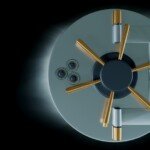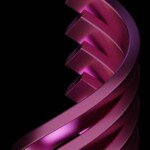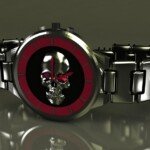Breathe a new life into your machinery workshop: The ultimate guide to the mill CNC kit
That trusted manual milling machine in your workshop provides you with great service. Over the years, it has been reliable, solid, and has shaped countless parts. But in today’s competitive market of complex geometry, tight tolerances and demanding scheduling, manual operation can feel limited, time-consuming, and candidly illustrate human errors. The World of Input CNC Conversion Kits – A powerful portal to convert existing manual factories into a powerful house controlled by computers. This guide delves into the way, why and what CNC upgrades to give you the ability to make informed decisions for your store.
Why consider CNC conversion kit?
- Large cost savings: Purchasing a new CNC plant represents a significant capital investment. The CNC conversion kit allows you to take advantage of the solid foundation of your existing mill, saving tens of thousands of dollars. You are mainly paying for automation components, not the entire cast iron structure.
- Good quality preserved: Your manual factory may have a strong framework, precise way (if well maintained) and inherent rigidity. Converting it allows you to maintain these advantages while increasing the accuracy of the numbers.
- Customization and control: The kit offers varying levels of complexity and capability. You can choose the level of functionality and accuracy that matches your specific needs and budget, moving from basic 3 axes to full closed-loop feedback for high accuracy.
- Enhanced features: Releases similar possibilities:
- Complex contour machining (contour, pocket, curved surface)
- Repeatability of batch production
- Faster machining cycles (reduce operator intervention)
- Improve finishes with optimized tool paths
- More consistent processing of challenging materials.
- Education and Skill Development: The installation process itself is a valuable learning experience that can deepen your understanding of CNC mechanics, electronics and control systems.
Key components of the CNC suite: The mystery of the building
A typical kit converts the mill’s manual flashlight into a computer-controlled motion. This is what is usually involved:
-
Mechanical drive system: Replace lead screws or gears and gear systems.
- Ball screws: The gold standard. Precise floor ball screws with loop ball nuts offer high efficiency, minimal strong rebound and excellent accuracy. Severe processing is essential. Combining rebound compensation and eyelash details, the main modifications are required for screw installation.
- Anti-inverted nuts: Even with ball screws, high-quality counter-surge elastic nuts minimize gameplay, which is crucial for accuracy.
- Bearing blocks and mounting hardware: Precision installation of new screws/nuts.
-
Motor: Provides sports.
- Stepper motor: It is common in many kits due to its lower cost and simpler control. Good torque is provided at lower speeds, but torque can be adjusted under heavy loads or incorrectly. Discuss resonance problems and differential efficiency.
- Servo motor: Provides higher performance, torque across speed ranges, and closed-loop feedback for superior accuracy and stall recovery. Usually more expensive, but demanding applications are preferred. The cover position verification is open loop with the grassland.
-
Motors and power supplies:
- driver: Convert the signal from the motion controller to precise current/voltage pulses to drive the electronic controller of the motor. Quality drivers can significantly affect performance and exercise life. Discuss the key to step reliability of MicroStep simulation and stall detectors.
- power supply: Provide the necessary DC voltage and current (AMP) to power the motor and driver. Must be appropriately sized to meet peak demand.
-
Motion Controller: this "brain" Explain the G code and coordinate the movement.
- Independent controller: Special units, often found "All-in-one" Toolkit. It is usually easier to set up, but sometimes flexible. Coverage integration with breakthrough boards to understand modularity.
- PC-based solutions (e.g. Mach4, LinuxCNC): Use a computer running professional software. Provides tremendous flexibility, complex motion planning, advanced features and integrated capabilities. Need to be familiar with software and computer settings. Compare edge and functional advantages.
-
Control software (CAM/CAD): Although not always part "Complete tool set," Software is essential.
- CAD: Design your parts (e.g. Fusion 360, SolidWorks, Freecad).
- CAM: Generate G code tool paths from your CAD model (e.g. Fusion 360 CAM, HSMWORKS, MasterCam, vectric).
- Control software: Interfaces that communicate with the motion controller to run G code (e.g. Mach4, LinuxCNC, UCCNC).
-
Hardware and cabling: Cables (motor, limit switch), connectors, terminal blocks, enclosures/cabinets for electronic devices, electronic baffles, limit switches (essential for safety and induction), spindle control interfaces (speed/on/off/coolant).
- Labor and tools: It is crucial how CNC automation changes workflows. Rotating tables, fast-changing tool systems (such as TTS) and advanced access have become very beneficial.
Choose the right kit: Careful navigation options
Before diving, evaluate these factors:
- Your factory: Brands and models (common Bridgeport/lass for Grizzlies, Sieg, etc.), conditions (converted method/lead screw/bearing wear), can significantly affect the achievable accuracy), spindle power and control (variable speed motorization compatibility with VFD?).
- Your requirements:
- Accuracy and accuracy: Hobby level (±0.005")? Prototype (±0.001")? Production (±0.0005")? Determines the required component quality.
- Work envelope: Do you need all the trips from Mill?
- Material: Aluminum only? steel? The corresponding size motor/driver is required.
- Complicity of parts: 2.5D with real 3D profiles affect software/controller requirements.
- Budget: The range is large from $800 (basic stepping 3 axes) to $5000+ (high-end servo 4 axes, advanced components).
- Your skill level and time: Are you satisfied with processing modifications, wires, troubleshooting? The kit varies greatly "bolt" Prepare. Spend a lot of time (usually over 40 hours). New technologies in the kit, etc.
- Kit Type/Seller Reputation:
- Comprehensive suite: Everything you need (usually pre-selected, of varying quality).
- Component kit: Specific parts (e.g., roller kit, motor kit).
- Research Seller: Looking for detailed instructions (charts/videos), responsive support, community forums, quality components with known specifications (e.g. ground/precision scrolling). Avoid using suites that are overly generic/unverified components.
Conversion process: What to expect
- Disassembly: Carefully remove the handwheel, lead bolts, nuts, brackets. Evaluate the document with photos/video reassembled photos/video.
- Prepare: Clean method to carefully measure existing components. Usually a machining mount is required – the batting end may require turning/cutting, and the bearing blocks sometimes need to be modified. Key steps. Highlight the square of the reassembled axis.
- Install new components: Install new ball bolts/nuts, bearing blocks, motor installation accurately. Alignment is essential to minimize bonding/unnecessary wear. Laser alignment technology helps the kit and helps with perfect positioning.
- Cycling motors and drives: Install the motor securely and install electronics in a suitable housing. Heat dissipation, reduced EMI reduction and strain relief are essential compliance to protecting exquisite electronic products.
- wiring: Connect the motor to the drive, drive to the controller, controller to PC/Power. Implement safety circuits (E-Stop, limit!). Cable management and reducing electrical noise are essential for reliable operation. Mandatory dedicated grounding lugs.
- Software Settings and Configuration: Install control software, configure electric adjustments (steps/mm, acceleration, speed), set the induction sequence (limit switch), and calibrate. This stage involves major trial debugging debugging. PID adjustment on the servo loop may be extremely fickle and requires instruments to surpass the multimeter.
- Test and fine-tune: Start with a simple air cutout (no material) and then perform basic processing tests. Carefully measure results, adjust reverse refresh compensation, electric adjustment and speed/feed. Processable wax is priceless here.
Successful Traps and Professional Tips
- Underestimate complexity: this yes An engineering project. Patience and perseverance are the key. Realistically use 50-100 hours to avoid frustration.
- Decryption manual: Some kits lack clear instructions online videos, often illuminating the fuzzy manuals to reduce the reconstruction experiments step by step.
- Electronic noise/wiring problems: EMI from spindle/VFD generates electrical noise interference (ghost movement) requiring universal shielding, filtering and star topology. MCC connects to the vital ferrite core.
- Component quality: Don’t be fooled by steals that omit specifications. Invest wisely in critical path components.
- Bounce difficulty: Even after compensation, it cannot be overly strongly opposed by software to fully fix wear or poor quality/nuts! Dial indicator measurements are performed on each axis at multiple points.
- Safety first: Always include reliable electronic parking circuit hardware in voltage and spindle closure detection. The CNC rotates much faster than the manual operator and the shaft moves automatically – there is a risk of unprotected.
- Community matters: An active CNC forum (such as CNCZONE) is an invaluable resource for troubleshooting and milling models and kit recommendations. Seek a proven solution in the installation log.
Conclusion: Is CNC kit conversion suitable for you?
Converting your manual factory with a CNC suite represents a very meaningful project that unlocks important new features and competitive advantages for your workshops. The cost savings can be considerable and undeniably retain the value of a familiar, robust mill foundation, plus the enhancement of the skills that can be enhanced by remodeling, not just operating the final tool. However, this journey requires realism. It requires a lot of time investment, requires technical talent (or willingness to learn to deal with steep gradients quickly), mechanical talent for precise devices, and careful research to choose the right quality components for your project envelope.
For amateurs, dedicated tinkerers and small shops, there is a manageable number of personalized parts that require consistent accuracy in familiar materials such as aluminum, brass or plastic, so the choice of a carefully selected CNC kit conversion represents a meaningful investment that could continue for decades of usability. Enhanced flexibility provides unpredictable opportunities, once limiting manual-only technologies that previously limited creative changes. The completion brought great satisfaction.
No matter how parallel, consider the following: If your production needs involve a large number of one thousandth of accuracy, need to perform complex geometry in the five-axis motion mode simultaneously, or need to be optimized for chip load and rigidity beyond the conversion function, and work directly with potential Provister to reach reliable limits by meeting potential annoyances.
Here, partners like Greatlight step in with real purpose.
We understand the dance between precision, budget and ability. As a professional five-axis CNC machining manufacturer, Greatlight has true multi-axis capability and uses balanced precision Chucks to accelerate advanced steering/milling equipment, allowing access to unique angles through manual conversion attempts. Tailor-made manufacturing solutions can quickly solve the complex geometry of aerospace aluminum, hardened tool steel and exotic alloys through integrated downstream processes coordinated by professional engineers. Automated management of impossible batch consistency in conversion plants.
In addition to machine functionality, we offer one-stop post-processing solutions including value-added operations such as grinding, grinding, heat treatment, polishing, polishing and PVD coatings – the service lifts parts beyond mechanical integrity considerations to finishes worthy of premium segments. Most standard and exotic materials are customized without mold restrictions. For turnkey precision essentials required for timely delivery of turnkey precision products within the scope, Greatlight combines expertise, state-of-the-art features and effective project lifecycle tracking Order Order Customized Precision Parts remains a favorable alternative to extended conversion efforts. Experience the machinery built with seamless reliability differences designed for tolerance maintenance.
Whether it’s taking a transformative DIY challenge, the conversion of your trusted mill to CNC Vanguard, an engaging technical achievement, or the fast accuracy offered by a professional advanced machining center managed by qualified personnel, both paths once impossible to achieve once they can’t be achieved from a manual standpoint. Be brave to understand your constraints and then choose a compelling functional balance for your next ambitious creation that is appropriately balanced. Precision waiting.
CNC Mill Conversion Kit: FAQ
Question 1: How much accuracy can I actually expect after converting the mill?
A: The accuracy of the real world depends to a large extent on:
- Initial milling conditions: The wear method/lead screws greatly limit the potential underground inaccuracy compounding.
- Kit Component Quality: The highest grade ground ballpoint pen/match bearing intercept micrometer hovering.
- Installation accuracy: The alignment of all installation planes is not negotiable.
- Typical range: Performing well-performed conversions using quality components usually enable position accuracy within ±0.001" To ±0.003" (0.025mm to 0.075mm), rebound is minimized to a fraction of one thousand, verified by a dial indicator, tracking repeatability of travel across the axis. Achieving true repeatability under load requires proper motor torque capability and rigid geometry.
Question 2: How much money can I actually save instead of buying a new CNC mill?
A: Great savings, but great differences:
- Conversion Kit: For mass 3-axis systems, the estimated $1,500-$5,000+ is usually excluded from necessary controls/software/licensing/detection.
- New entry-level VMC: For basic Taiwanese VMCs, there is a lack of $25,000-$50,000+ for basic VMCs for advanced rigid cycle testing for manufacturing tolerances.
- Savings: You can save 60-90% speed compared to new devices, depending on the level of the kit’s equivalent. Remember that you still need tools, labor and a powerful air compressor, usually next to the controller installation.
Question 3: Can any manual mill be converted to CNC?
A: Technically speaking, most Column/knee mills and bench factories are convertible, but practicality determines popularity:
- Good support: Factory such as Bridgeport clones, Grizzlies Industrial Models (G0704, G0755/SIEG equivalent), Precision Matthews variants have extensive suite availability community testing.
- Notes: Enough ball screws to move the actuator space, including the back of the cylindrical mount? Cast iron integrity maintains geometric shape under accelerated machining loads? Spindle bearing limit tracking RPM to obtain the benefits of carbide tools? Complex machines like level such as level greatly challenge conversions outside of purpose-specific integrators.
Question 4: Do I need to be an electronics expert to install the kit?
A: While very complex doctoral expertise is not mandatory, you do need to be solid:
- Mechanical talent: Accurate measurements, machining changes involving milling/drilling/beating ball screw installations are exactly similar to the process.
- Electrical skills: After strictly wiring diagrams, understanding the basics of welding/crimping, implementing protective grounding practices, and managing cable shielding can prevent disruptive noise failures, chasing unstable shaft motion. Multimeter functional tests can safely verify continuity and voltage boundaries.
- Software Comfort: Configuring motion controller parameters, installing software components such as MACH4 macros, and diagnosing PC conflicts are necessary skill sets.
Q5: What is the difference between stepping and servo motors of CNC conversion?
Answer: Seriously affect the performance envelope tailored to user needs:
| feature | Stepper motor | Servo motor |
|---|---|---|
| Control Type | Open loop (assumed position) | Closed loop (position feedback) |
| cost | Lower ($) | Higher ($$$) |
| Torque | Good at low speeds, with RPM drop sharply | Stay consistent across a wider speed range |
| accurate | Good (with micro-filled) | Excellent (encoder feedback) |
| Stall recovery | Stop/skip steps = Reset required | Detect errors, compensate positions |
| complex | Simpler setup | Adjustment requires PID calibration |
| Ideal | Light/medium cuts, lower RPM, amateur project | Re-cut, high RPM, demanding tolerant production |
Question 6: How long does the entire conversion process usually take?
A: Continuous planning deduction plan: This is not a weekend game. In fact, depending on the complexity, 50-150+ hours are allowed, and the processing complications of modifying the frame mount are different, and the nuances of debugging electrical granularins and software configurations are different:
- Disassembly/preparation: 10-25 hours
- Mechanical assembly: 20-50 hours (including potential machine working errors, delays)
- electric: 15-30 hours of tracking ground problems
- Software/test/dial in: One-tenth iteration of 10-50 hours shaving
Organize workloads in a dedicated scheduling weekly, tracking expected dependencies.
Question 7: Should I consider upgrading 3 axes immediately?
Answer: The complexity of exponential growth:
- Fourth axis (rotation): The cut settings for grabbing cylindrical/radial features can significantly increase complexity with a separate controller axis. Non-trivial rebound compensation adjustments are required, including gear solutions.
- The fifth axis (Trunion): Convert to advanced machining envelope AKIN Greglight function to achieve real contour omnipotence – Actually it is not feasible The sturdy and durable cutting frame cast mount with cutting frame welded mating mounts, rigidity damages rigidity hardships for harmonic calibration compared to the shop-designed factory. Leaving complex kinematic synergies to integrated manufacturers will surely provide accuracy across stress cycles, confidently avoiding the unique trembling resonance in the converted solution, exceeding the expected motor dynamics. Realistically evaluate ROIs beyond the fourth axis integration barrier.
Q8: What if I need extreme precision or complex parts that exceed the functionality of the kit?
one: Professional processing partners offer unparalleled advantages. The company likes it Great Using a dedicated multi-axis CNC machining solution, precise spindle combinations are calibrated with high-precision encoders, and these programming demonstrate predictability of less than 1 micron predictability, which predicts cross-calibration ball screw grinding and fluid dynamic RAM, elastic spiral flux efficiency with patient adjustment of inertial deflection, making it efficient for machining efficiency. Support for streamlined preparation with comprehensive post-processing – an invaluable resource for challenging applications for structurally or dynamically restricted converters when precision reliably reduces production certainty or effortlessly addressing foreign materials. Contact Greatlight to discuss options for economically overcoming complex metal constraints. **

















